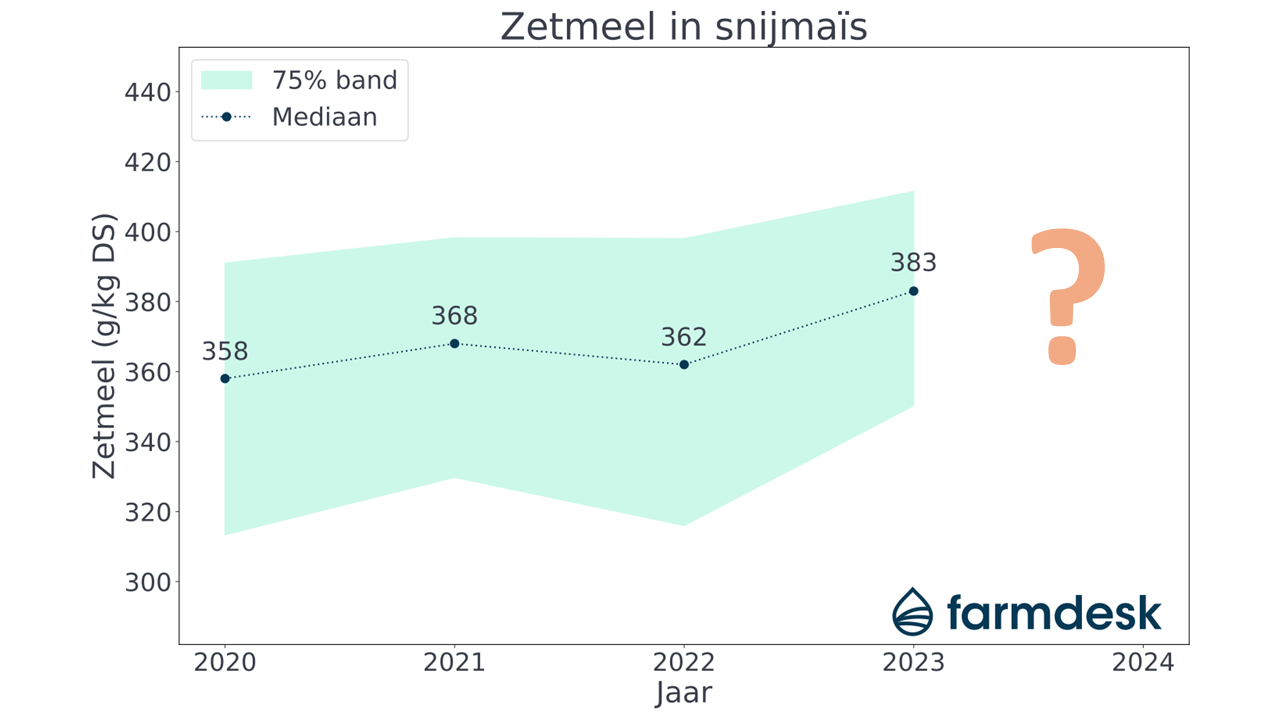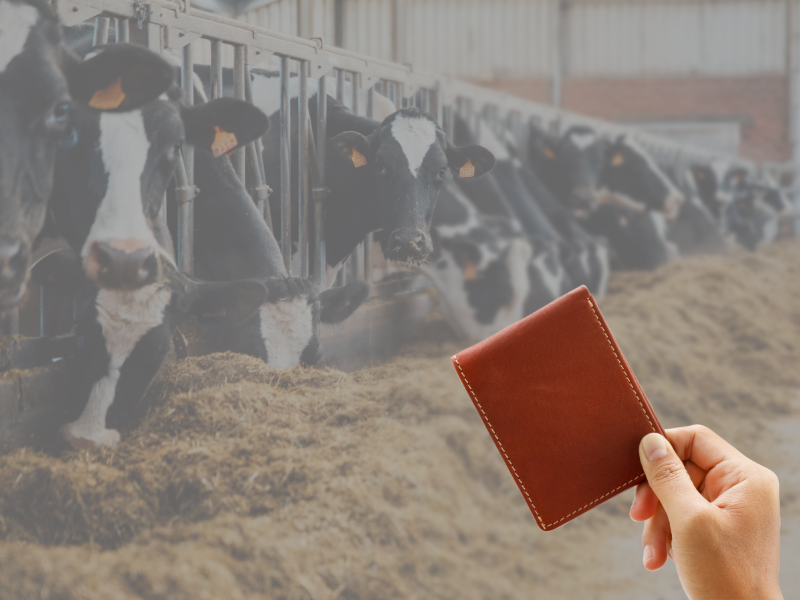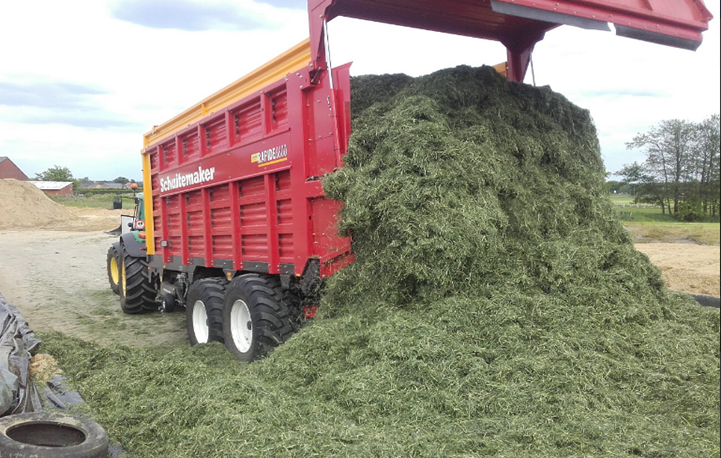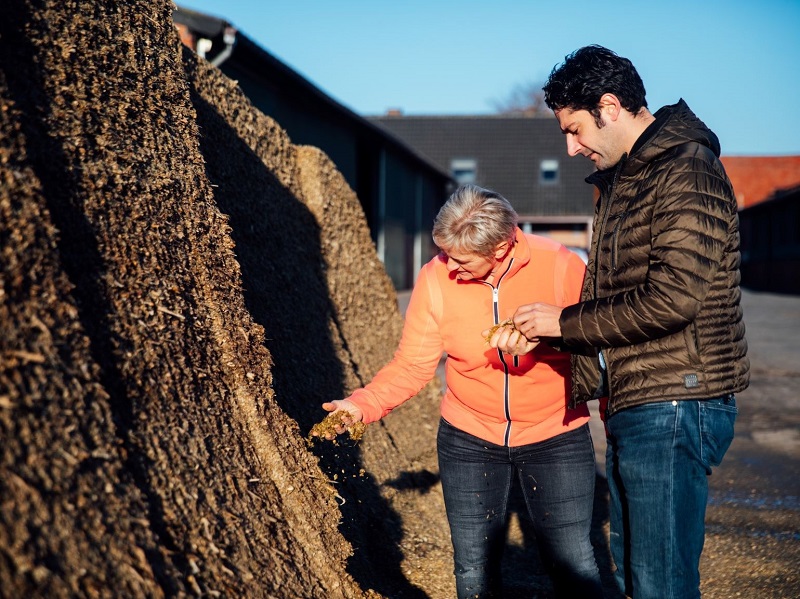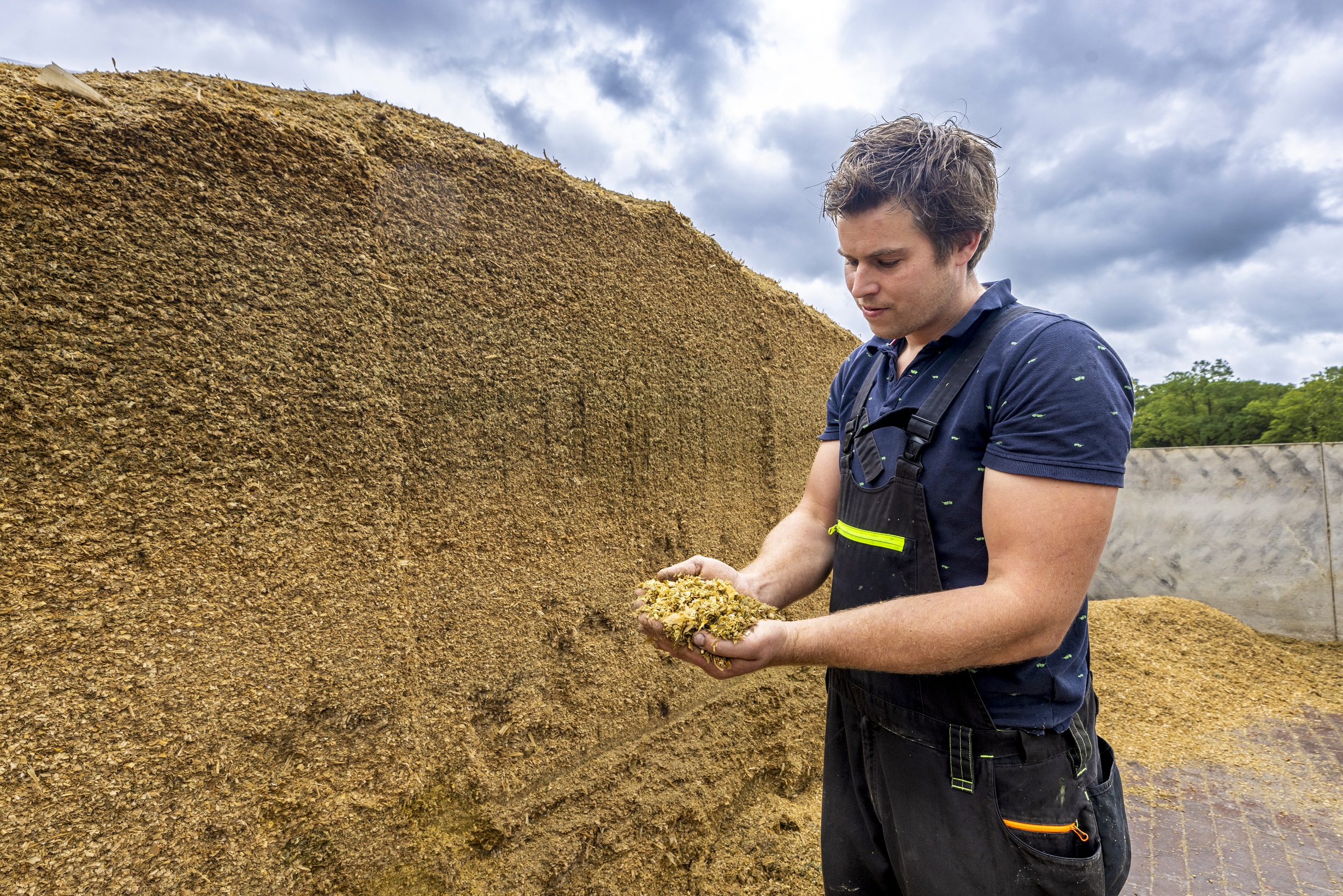This year's cut corn harvest is once again upon us. Many dairy farmers are looking forward to this new crop because last year's severe drought produced especially a lot ofslowly digestible corn during the past preseason.
For those livestock producers who still have a lot of stock of this slow-digestible corn and are struggling with rationing with it, it might be opportune to harvest (some of) the cut corn earlier this year so that it can be fed in conjunction with the older 2020 corn. This can speed up the ration without expensive wheat or other rapidly digestible energy components that must be purchased in addition. This can be done by distributing the old corn over the already emptied silage area and ensiling the new, rather wet corn that is relatively finely chopped over the old corn.
Quality of other feeds affects harvest timing
To determine the optimal timing of this year's harvest, it is also a good idea to take a moment to consider the quality of the grass (clover) silage you have in stock. On farms that were already able to make a fast-digesting grass (clover) silage early in the spring, supplemented by increasingly young cuts further into the growing year, it is opportune to harvest the corn at an earlier high dry matter content . Especially if this corn will be fed in combination with beets during the winter.
On quite a few farms, however, thefirst cut was late because of the cold and wet spring, where it was common that soil carrying capacity did not allow timely mowing between rains. The resulting kilages are rather rich in crude fiber and contain few rapidly digestible carbohydrates and little protein. For such silage to still be somewhat well utilized, it may be appropriate to partially harvest the corn unripe as silage corn.
In addition, the ample crude fiber supply will benefit from harvesting a portion of corn in the form of MKS or CCM, so that the ration will not contain too much crude fiber . An additional advantage of a portion of maize under the form of MKS or CCM is the fact that you can then harvest the maize seeds free ripe and, in addition, relatively less protein correction will then also be needed because the protein-deficient stalk does not need to be further compensated.
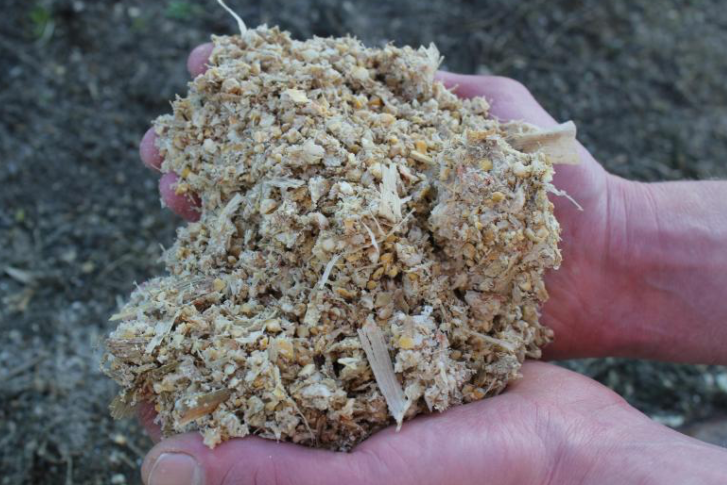
Some farms prefer to replace the combination of silage corn and MKS or CCM by chopping all corn under the cob. This so-called 'Bermuda' corn has the advantage that the hard-to-digest corn stalks from under the cob are not included while the thinner stalk and leaves from above the cob are with it. Psychologically, there are some objections among dairy farmers to leaving expensive silage corn partly in the field, in addition to the practical objection of the firm stubble tillage necessary to sow a catch crop to be mowed for next spring. But with a rational approach and the right stubble-tilling equipment, this can still work out well.
In short, thinking about harvesting corn crops also requires insight into the rest of the feedstuffs on the dairy farm to achieve success during the feeding period.
Operation of the ensiling process
For those farms that are yearning for the corn because the old supply is running low, new corn might have to be fed shortly after harvest.
However, the experiences with this are usually not so good, even if it was harvested at the theoretically right time. But what is the reason why initially it usually doesn't go well with the fresh corn, but only after several months?
Sometimes reference is made to the sugars in fresh corn being released too quickly and in excess, but this is rarely a problem. Because the sugars are largely locked up in the cells, they must first be broken down in the rumen before the sugars are released. If the corn is chopped very short and fatigued, this situation may occur more quickly, however.
A greater cause of not running of fresh corn can be explained by the absence of preservation. During preservation (ensiling), sugars and easily degradable starch are converted into acids (by the bacteria present in the silage). As a result, the pH of the silage drops from 7 at ensiling to about 4 (depending on the DS content of the silage). In addition to creating a higher storability, other things happen in silages:
- Starch resistance decreases
- A higher digestibility of cell walls occurs (NDF)
The following is an explanation of these 2 points.
Starch resistance
The starch in silage corn is all small grains, packed together in the complete corn kernel. The property of these grains is that they have a very hard structure .
This means they are very difficult to break down in the rumen. As a result, the nutrients will be released very slowly for the rumen bacteria. Much of the starch is not released until the gut level, this is the so-called resistant starch. In freshly ensiled corn, this resistant starch is over 30-35% of the total starch present.
During the ensiling process, the acids slowly begin to act on the starch grains and this will reduce their resistance, making thestarch easier to break down in the rumen and thus serve as a nutrient for rumen flora.
This process had its greatest effect after about 3 months of ensiling, but continues even after this. After about 6 months, the resistance has decreased to 20-22%. Virtually all silages then reach the same level.
High-producing cows can utilize resistant starch very well, but an excess does not make sense. In addition, the rumen must first work fully before the intestines are switched on. After all, a cow remains a ruminant.
The excess of resistant starch, along with the slowness, difficulty in fermenting the "regular" starch, has a great effect on the digestion and fermentation pattern in the cow's rumen and intestines. Therefore, the result is a more solid manure witha lot of grain residue (unused feed value) which puts pressure on milk production.
Starting with the holidays (Christmas/New Year), we see a change, and corn feeding starts to "run" again.
Pre-digestion of cell walls (NDF).
Corn is very energy-rich in terms of starch, but the cell walls and cell content also have a definite impact on the whole. The main key figure in this is the NDF digestibility.
The NDF is the summation of all fiber-rich material. The digestibility of this can be examined. In good hay silage, it is above 70%. If the digestibility is below 70%, the hay silage is actually unsuitable for dairy cows. With silage corn, this digestibility is at a significantly lower level, roughly between 45 and 55%.
Fortunately, the digestibility of corn can be increased. This is because the process of ensiling also affects the cell walls. If a silage sits longer in an acidic environment, the cell walls also gradually become easier to digest/ferment for the cow/pens flora.
This breakdown effect is faster than for starch. For the process of ensiling to have sufficient influence, the corn must be ensiled for at least 6 weeks before feeding.
Impact on management
As a business owner, you need to look ahead and also learn. For example, one possibility is to look ahead now to next year, and distribute the corn available until the end of 2022. This will probably provide a small shift in the current ration, which of course should be possible with the total stock available.
Drawing up a balance of available barn feed will be crucial for this. An additional condition here is that the corn for fall 2022 must also be accessible to feed at that time.
If it is currently 'just' sitting in the trench silo, there will therefore come a time to ensile some of it over. This ensiled corn must sit tight for at least 3 weeks, otherwise unwanted heating will very easily occur.
Specifically, this means that, no later than mid-summer 2022, a portion of the corn will have to be transferred to a new silage for feeding in the period between harvest the end of 2022.
The advantage of this is that it does take away a big chunk in the front of the silage, so that real cold, fresh corn will be fed again. For the even longer term, the search is on for a way to have so much corn storage (and have it in storage), so that preserved corn can be fed at all times.



